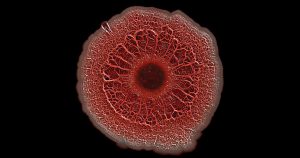Enter your address to receive notifications about new posts to your email.
Articles tagged Yeast
(44 results)
-
2019 Edward Novitski Prize awarded to Joseph Heitman
Prize recognizes extraordinary creativity and ingenuity in genetics research. Joseph Heitman, MD, PhD of Duke University is the recipient of the 2019 Genetics Society of America (GSA) Edward Novitski Prize. Heitman is honored for his work on human fungal pathogens and for identifying the molecular targets of widely-used immunosuppressive drugs. The latter work proved to…
-
Does Candida grow on trees?
An opportunistic human pathogen makes itself at home on old oaks. At one point or another, most people have played host to the common yeast Candida albicans. Around 40-60% of healthy adults carry around it in their mouth or guts; in immunocompromised people, however, this normally harmless cohabitant becomes a deadly pathogen. Generally thought to…
-
What’s the cost of a slip in translation?
Programmed ribosomal frameshifting has translational costs that may influence codon usage bias. The genetic code has some redundancy—the same amino acid is often encoded by several codons. However, these codons are not necessarily equal in their effect, as evidenced by the codon usage bias observed in many organisms. The translation efficiency hypothesis posits that some…
-
Congratulations, Summer 2018 Undergraduate Travel Award Winners
To promote excellence in undergraduate research and education, the Genetics Society of America has established a travel award to assist undergraduate members attending a GSA conference to present their research. Congratulations to all the winners of the Undergraduate Travel Award for Summer 2018! Ryan Cheng University of California, Los Angeles I study the…
-
Seeking the flaw in error-prone DNA polymerases
Yeast study suggests faulty proofreading is not to blame for link between cancer and DNA polymerase ε variants. Accurate DNA replication is a matter of life and death. The polymerases responsible for replicating DNA have built-in safeguards to defend genome integrity, including proofreading activities to correct their own errors. Abnormally error-prone variants of DNA polymerase…
-
A CRISPR shortcut for switching yeast mating types
Wild yeast aren’t picky about their mates. For Saccharomyces cerevisiae, setting the mood is as simple as providing an abundant supply of nutrients, which prompts each yeast cell to search for another of the opposite mating type. If a lonesome yeast cell can’t find a suitable partner, it’s no problem—it can alternate between mating types,…
-
From fish tank to bedside
Yeast and zebrafish are among the lab organisms being recruited to the search for rare disease cures. Rare diseases are not so rare. About 300 million people worldwide live with the more than 7000 individual diseases that are designated “rare” by the US government. But because each of these affect so few individuals, the usual…
-
How baker’s yeast turns from friend to foe
Beer, doughnuts, and genetics textbooks have one thing in common: they were all made possible by collaborations between humans and yeast. Our fungal ally Saccharomyces cerevisiae resides not only in breweries, bakeries, and laboratories, but also sometimes in our own bodies—where, on rare occasions, it betrays us. S. cerevisiae is increasingly being reported as an…
-
Benign yeast turn into filamentous pathogens in different ways
The yeast Candida albicans lives on and even inside many of us. Most of the time, its silent presence goes unnoticed, but this fungus can turn on its host, causing infections ranging in severity from annoying to life-threatening. For the yeast to become pathogenic, some of the C. albicans must transform from small, round cells…
-
An extra chromosome that does double duty
Inheriting an extra chromosome can sometimes be disastrous, but in the September issue of G3, Linder et al. investigate a chromosome duplication that helps yeast survive harsh conditions. Yeast with an extra copy of chromosome IV better tolerate hydrogen peroxide exposure, largely thanks to an extra copy of a gene that detoxifies the chemical. This…
-
Switching biofilm formation on and off in yeast
When a group of microorganisms needs to stick together, they build a biofilm. The cells cement themselves together onto a surface, forming durable structures that are notoriously hard to remove. In a medical setting, biofilms can contribute to dangerous antibiotic resistance. In the August issue of G3, Cromie et al. use a yeast model to…

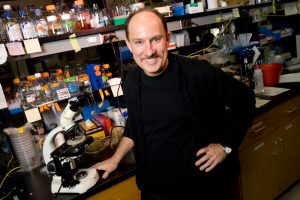

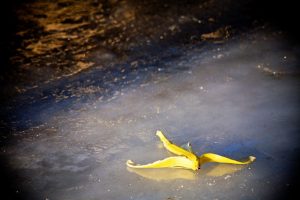


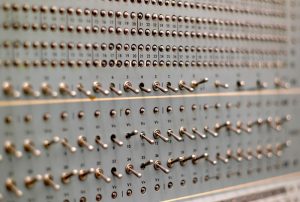
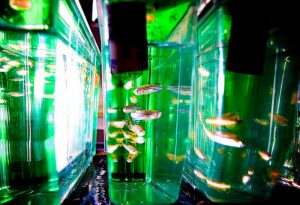


![Photo by publicdomainpictures.net. [CC0]](https://s36063.pcdn.co/wp-content/uploads/2017/09/red-doubledecker_770x-300x199.jpg)
